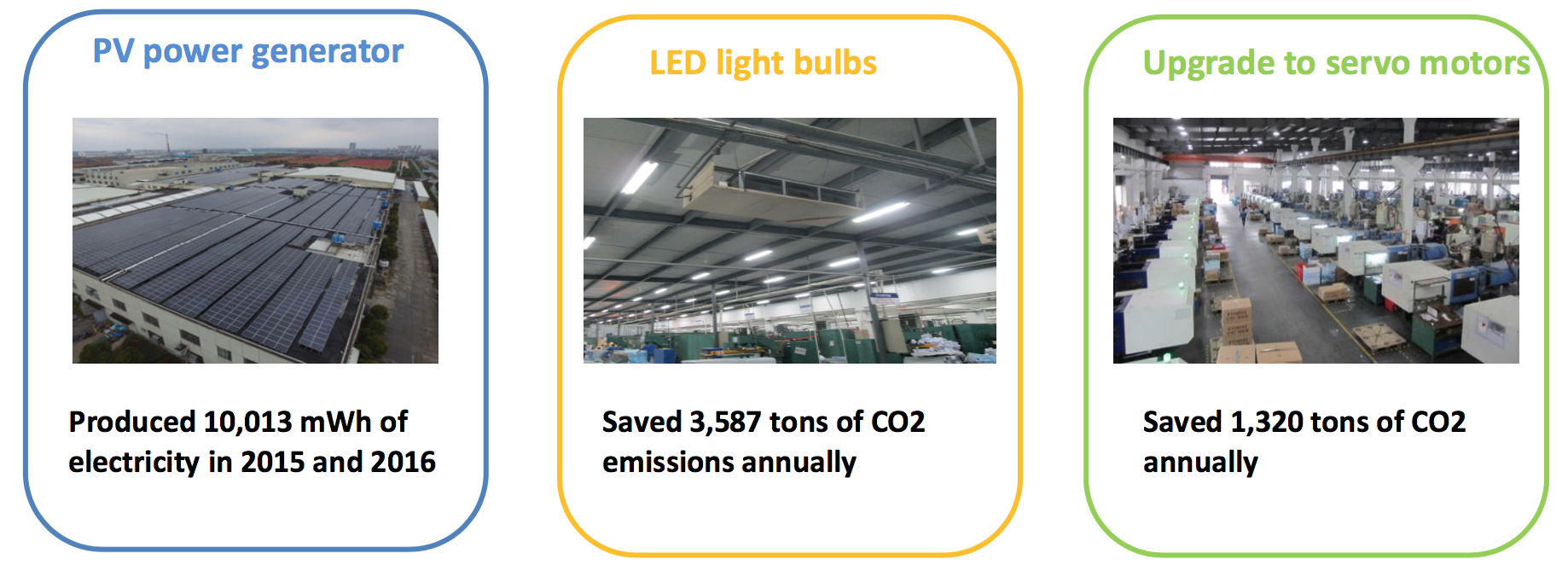As one of
the world’s largest retailers, Walmart’s environmental impact extends far
beyond our own operations to the supply chains that deliver apparel,
electronics and other products to our shelves every day. Walmart engages with
our suppliers to reduce these impacts to the environment when possible, with a
focus on energy efficiency.
Walmart
launched the original Factory Energy Efficiency Program in China in 2008 when
the company committed to work with direct suppliers to improve energy
efficiency by 20 percent per unit of production by the end of 2012. After
achieving that goal, Walmart decided to scale the work. In August 2014, Walmart announced
a new commitment for suppliers and factories representing 70 percent of our
business sourced in China to participate in Walmart’s Factory Energy Efficiency
Program by the end of 2017. To achieve this target, Walmart has promoted use of
McKinsey & Company’s Resource Efficiency Deployment Engine (RedE), a
web-based tool designed to help suppliers identify, prioritize and implement
energy efficiency projects in a simple, easy-to-use platform. Factories that
use RedE are provided with project ideas to reduce energy costs, as well as a
platform to track progress and report energy metrics to Walmart.
More than
600 Walmart factories in China are trained on the use of RedE, and participating
factories are supported by local-language training from experts such as
Environmental Defense Fund. Training covers the latest energy efficiency and
renewable technologies, advice on setting up an energy management system, information
on energy policy and best practice sharing. In 2016, more than 200 factories participated
in trainings.
As of February 2017, the program is on track and
delivering results:
- More than 50 percent of our China-sourced business
reports being a part of an energy efficiency program and the company are on
track to meet the 70 percent commitment
- More than 600 factories have joined the RedE
system; on average, an active user is projected to reduce CO2 emissions by 900
metric tons
- More than 650 individual projects are in progress
or complete, driving more than 110,000 metric tons of CO2e emissions
reductions.
(The Walmart Factory Energy Efficiency Program - 50 samples of RedE participating factories’ reported progress.)
Bestway, one of the world’s largest Chinese plastic toy
manufacturers, began participating in Walmart’s Factory Energy Efficiency Program
in 2015. Bestway was encouraged by Walmart to use McKinsey & Company’s
Resource Efficiency Deployment Engine (RedE) to guide the company’s energy
management practice, and measure and report its emissions footprint through the
CDP Supply Chain program.
In 2015 and 2016, Bestway implemented 25 projects, which saved nearly
11,000 metric tons of CO2 emissions. Examples of projects implemented include
installing solar panels to generate electricity power, enhancing air compressor
heat recovery systems, recycling and reusing boiler steam, changing to LED
light bulbs and upgrading motors on plastic injection machines. With these
efforts, Bestway was recognized by CDP as a top-rated Chinese company in the
2016-2017 CDP Supply Chain Report.

Bestway took another
step forward in their sustainability efforts by making commitments toward
Walmart’s Project
Gigaton in the areas of energy consumption,
renewable energy and waste; with waste as a new category of reporting and
tracking. Bestway plans to reduce energy consumption by 10% yearly, use 10%
solar for all energy needs by 2020, and increase waste recycling by 3% year
over year.
(The above content was provided to IPE by the brand, who is responsible for the accuracy of the data.)